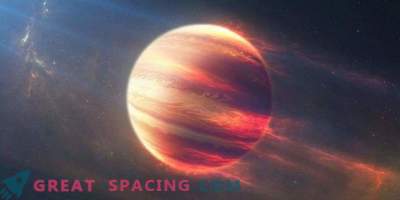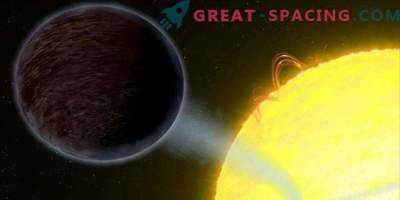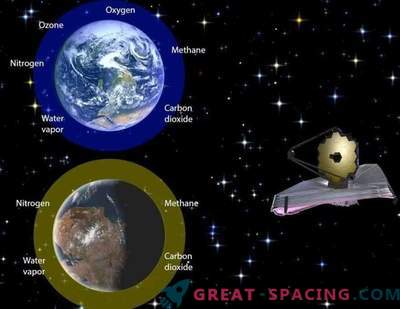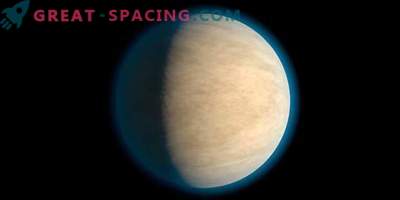
NASA scientists found out that WASP-18b (hot jupiter), which is 325 light years away, has a stratosphere with carbon monoxide, but without signs of water
NASA obtained evidence that the small exoplanet WASP-18b is packed in a suffocating stratosphere, devoid of water. The data obtained from observations of the Spitzer and Hubble telescopes.
The creation of the stratosphere is associated with “sun” molecules that absorb UV and visible radiation released from the star. Then this energy is released as heat. New analysis shows that hot Jupiter WASP-18b, rotating close to the star, is endowed with an unusual composition. Most likely the formation of this world is different from the formation of gas giants.
On Earth, ozone absorbs UV rays in the stratosphere, protecting our planet from harmful solar radiation. For exoplanets with stratospheres, the “absorber” is usually a molecule, like titanium oxide.
Scientists have carefully considered the WASP-18b, distant for 325 years from us. This is a heavy planet exceeding Jupiter’s massiveness 10 times. She was watched many times, so we managed to get a full feature. In the last analysis, 5 eclipse events from Hubble and Spitzer archive data were studied.
The light emitted by the planetary atmosphere allows the identification of spectral traces of water and other important molecules. The analysis showed that WASP-18b differs from exoplanets studied earlier. To determine the exact list of molecules, we had to turn to extensive space modeling. The information indicates an abundance of carbon monoxide and a very tiny amount of water vapor. Also present is the stratosphere. Such a combination of factors is a rarity for researchers.
The object is endowed with hot carbon monoxide in the stratosphere and cooler carbon monoxide in the troposphere. For the first time, we managed to fix both types of traces for one species of a molecule in an exoplanet atmosphere.
Theoretically, an exoplanet can also have carbon dioxide, the molecule of which converges on a fingerprint. If compared with other hot Jupiters, this one should contain 300 times more metals, which means that during the formation of the WASP-18b it could accumulate more solid ice than Jupiter. Then the process of creation will also differ from the hot Jupiter.
Now scientists are eagerly awaiting the launch of the telescope of James Webb and other large space observatories, which will provide more powerful tools for the review.











































